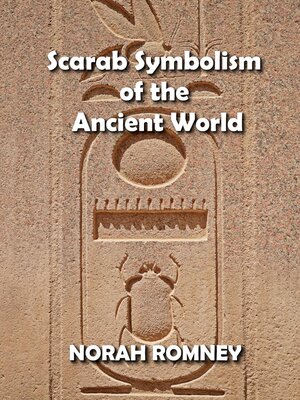
Sign up to save your library
With an OverDrive account, you can save your favorite libraries for at-a-glance information about availability. Find out more about OverDrive accounts.
Find this title in Libby, the library reading app by OverDrive.



Search for a digital library with this title
Title found at these libraries:
| Library Name | Distance |
|---|---|
| Loading... |
In ancient Egypt, the scarabaeus was already the symbol of an elevated religious idea, embracing a human soul's future life, its resurrection from the grave, and, most likely, its reward or punishment in the next life, based on its conduct in life.
As far as we have determined, the use of scarabaeus models as symbols of new life and the future eternal life of the triumphant or justified dead pre-existed in the earliest historical knowledge we have about Ancient Egypt. An inscription on the lid of the coffin of Men-Kau-Ra, king of the fourth Memphite Dynasty (circa 3633-3600 B.C.), and builder of the Third Pyramid at Giza, confirms that some of the most elevated conceptions of the Per-em-hru, i.e., the so-called Book of the Dead, existed as accepted facts. The dead One became an Osiris during this early period, living forever.
Most likely, it predates Mena, the first historical Egyptian king. It is impossible to predict how long before his period existed in Light of our current knowledge of Egypt's ancient history and thought. We know nothing about the indigenous people of Egypt. We can guarantee that the group known to us as the Egyptian originated in Asia and was Caucasian. The invader had an elevated form of religious belief when he arrived in the Valley of the Nile.
One of the earliest stela, now in the Ashmolean Museum in Oxford, England, and the other in the Museum at Giza, Egypt, was carved for the tomb of Shera, a priest of Sent, the fifth king of the Second Dynasty who lived about 4000 BC. Lepsius shows the stele in his Auswahl, and it is the oldest known hieroglyphic inscription. This stele represents a false door.







